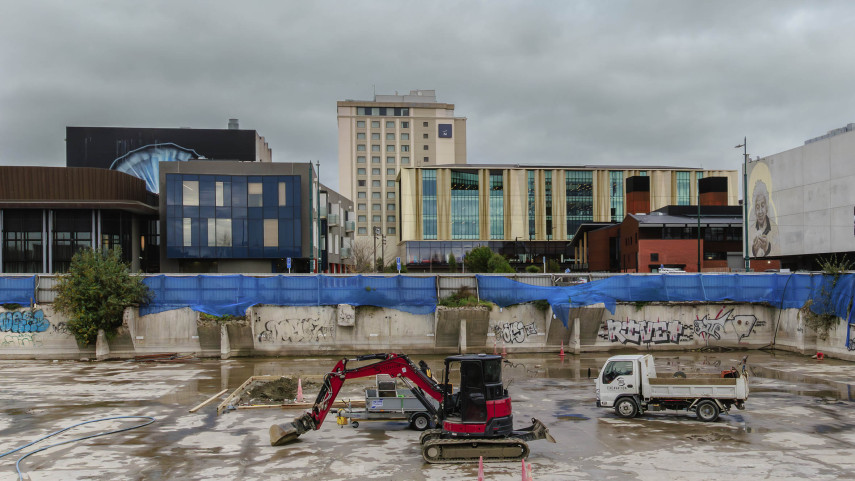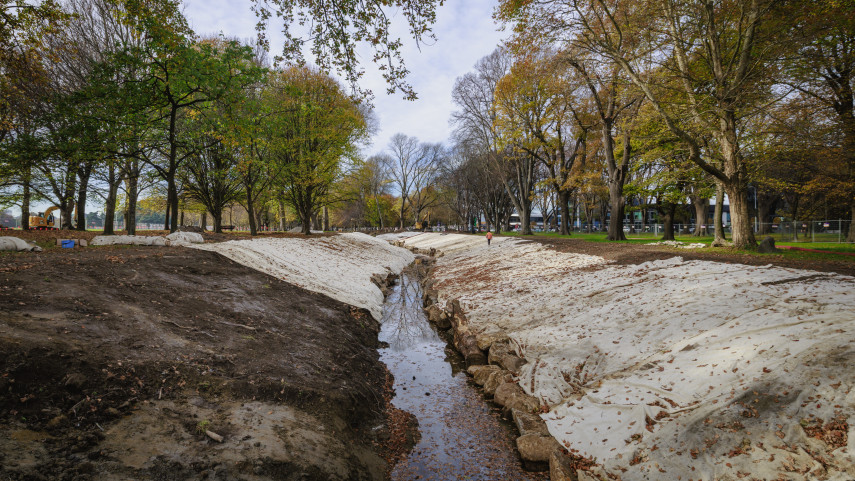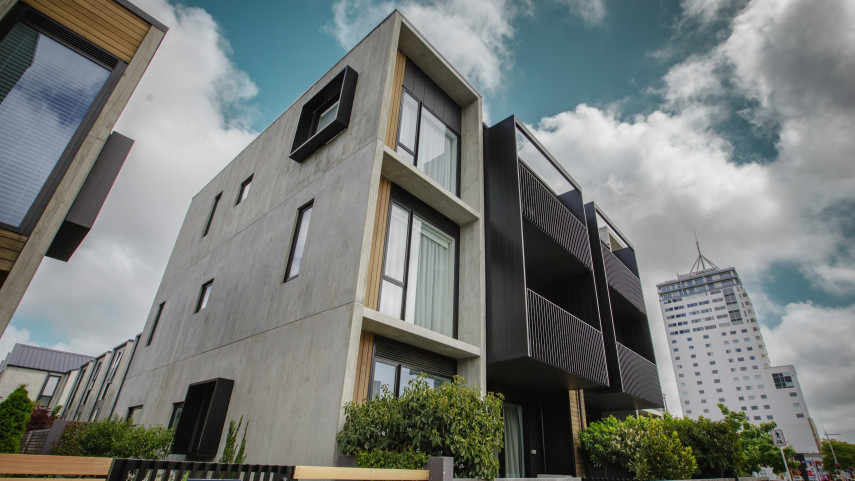Council, 22 June 1992
1. Goal
To contribute to the overall public health, safety and amenity of residents and visitors through the provision of high-quality, accessible public toilets suitable for the various localities of the city.
2. Objective – Location
To achieve the adequate provision of public toilets in areas of high public use.
2.1 Policies within the central city
- Public toilets be provided and maintained in civic and metropolitan facilities such as the Civic Offices, Town Hall, Art Gallery, public car park buildings, and the Canterbury Public Library [Christchurch City Libraries], available for public use during the hours of operation of the facilities.
- Privately owned major retail stores be encouraged to continue to maintain public toilets during their hours of operation.
- That a well-identified 24-hour public toilet which includes baby change facilities, changing rooms, showers and baggage storage facilities, be provided in or close to Cathedral Square and to standards that enhance the city's image as a tourist destination.
2.2 Policies within the suburban areas of the city
- Public toilets be provided and maintained at all major shopping centres in the city. In particular: At Riccarton, Papanui, Sydenham, Bishopdale, and Barrington Shopping Centres, existing private and publicly owned public toilets be encouraged to continue to operate during the hours of operation of the centres. At Hornby, Linwood, Shirley and Church Corner Shopping Centres, existing privately owned public toilets be encouraged to continue to operate during the hours of operation of those centres and new council-owned public toilets be provided where the need is demonstrated and resources allowed. At New Brighton, a new privately operated public toilet be encouraged within a future commercial development in place of one of the existing Council-owned toilets in or near the shopping centre. At Merivale (subject to Community Board consultation) the existing Council-owned toilet be closed (as there are two privately owned toilets within the shopping centre).
- Public toilets be provided and maintained at all intermediate-size shopping centres in the city by private owners, by the Council, or as joint ventures. In particular: At St Martins (privately operated), Stanmore and Sumner (both Council operated) existing public toilets be encouraged to continue to operate and be maintained during the hours of operation of the centres. At the following shopping centres, public toilets be provided as a priority.
- Woolston
- Addington
- Edgeware.
Of the nine remaining intermediate shopping centres, public toilets be provided as resources permit and need is confirmed, in the following order (based upon the size of centres). - Wairakei
- Halswell
- Aranui
- Ilam
- Fendalton
- Avonhead
- Redcliffs
- Hoon Hay.
- That new major retail redevelopments over 2000 square metres in gross area in major and intermediate shopping centres, be required by the City Plan to provide public toilets (with baby change facilities) available during the hours of operation of the centres. The role of the new, all-day service stations in providing toilets for the use of the public, be acknowledged.
- That consideration be given (in consultation with the appropriate Community Board) to the closure of Council-owned public toilets where their location falls outside the above policies, and in particular:
- Vernon Terrace (poor condition)
- Ferry Road (Phillipstown) (poor condition).
- Where shopping centres are in fragmented ownership and/or multiple lease and no toilets are available for public use, the Council will consider: Making suitable toilets available within existing civic facilities such as Customer Service Hubs, libraries, or on parks where these are convenient; or A joint venture/partnership development with shop owners, which may include sharing in the provision of land, capital and maintenance costs; or Providing free-standing public toilets where the above are not possible.
- Where major new Council facilities serving the public such as community centres, libraries, Customer Service Hubs, parking buildings and stadiums are constructed, toilets located and designed to be available for public use during the hours of operation of those facilities, be included in such facilities.
- That public toilets be continued to be provided on parks where sport is played and at other heavily used recreation and visitor locations; either by the Council or in partnership with sports clubs. Toilets within sport clubrooms located on parks, be designed to be available for public use while the clubrooms are open.
2.3 General policies about location
- Requests for new public toilets to be provided outside the above policies, to be considered only where it can be shown that there are:
- Special characteristics of the population (such as high numbers of elderly and/or young children)
- A high number of potential users
- No availability of alternatives
- Special locational needs.
A need established for example through consultation with Community Boards, Residents' Groups, Age Concern, Plunket, the Disabled Persons Assembly (New Zealand) Incorporated, Area Health Committees.
- Where a need for new public toilets is established, the following options for their provision be investigated:
- Private development and/or sponsorship
- Joint venture and partnership between the Council and private interests
- Direct provision by the Council.
3. Objective
To provide accessible and safe public toilets that minimise effects on local amenities and promote a positive Council and city image.
3.1 Policies
- The main criteria for sitting public toilets shall be their visibility from and proximity to:
- Major traffic routes
- Major pedestrian ways
- Areas of public assembly
- Areas of intense activity.
Within shopping centres, public toilets should be centrally located.
- Public toilets shall be set back from residential boundaries to ensure there is no immediate direct outlook from residential neighbours.
- Public toilets shall be sited in proximity to management or administration facilities to offer casual surveillance.
- Public toilets shall be easily accessible by the disabled, the elderly and young children.
4. Objective – quality and standards
To ensure public toilets are hygienic and maintained to a high standard according to their location.
4.1 Policies
- A programme of regular servicing, maintenance, upgrading and monitoring of Council public toilets be continued.
- Within Commercial and Business Areas and within Civic, Metropolitan and tourist facilities, servicing and maintenance shall be to a very high standard. Facilities to include toilet paper, hot and cold water and hand-drying facilities. The number of fixtures shall adequately cater for anticipated demand.
- On Parks, servicing and maintenance shall be to a high standard and where possible with a minimum of a female WC and basin, a male WC, urinal and basin, and toilet paper and dispensers.
- Public toilets shall be integrated into the design of existing buildings where practicable.
- Stand-alone public toilet facilities shall be designed to be attractive and harmonise with its [their] surroundings through the appropriate use of materials, colour, roof pitch, building bulk and scale and taking into account surrounding buildings and amenity values.
- Public toilets shall be lit from both inside and outside if open beyond trading and/or daylight hours.
- Public toilets shall be clearly signposted giving clear directions from pedestrian and traffic routes. Accesses and entrances shall be clearly visible and identified by international gender symbols or other notation.
- Public toilets shall be designed to minimise vandalism and to facilitate cleaning. Stand-alone buildings in particular shall be painted with anti-graffiti paint.
- Baby change facilities should be included in major shopping centres and include hot and cold running water, a bench for changing and waste disposal.
- Where separate male and female toilets are not practical, joint use shall be provided for.
- That public awareness of the availability of public toilets be promoted through existing maps and tourist and publicity information.
5. Objective – roles and responsibilities
To promote a shared responsibility for public toilets between the Council and private owners and a coordinated approach within the Council.
5.1 Policies
- That the Council as a general rule, encourage[s] the private provision of toilets available for public use during the hours of operation of associated facilities. Where this is not practical, joint development and co-operation with other private business and recreation facilities or other Council community facilities, be pursued. Stand-alone Council-funded and operated public toilets only be undertaken where the other approaches are not appropriate or practical.
- That the Council require[s] large private shopping developments over 2,000 square metres to provide public toilets open during the hours of the centres, through rules in the City Plan.
- That community needs and existing public toilets be reassessed from time to time.
- That the control of Council public toilets rests with the various Council Business Units as at present, but subject to overall corporate policy guidance as follows:
| Group | Unit | Toilets |
|---|---|---|
| Technical Services | Parks | Toilets on parks |
| Metropolitan Services | Town Hall Libraries Car parking Leisure and Neighbourhoods |
Public use of Town Hall toilets Public use of library toilets Public toilets within car parking buildings Sports stadiums, pools, city centre |
| Community Operations | Sockburn Papanui Beckenham Linwood Fendalton Shirley |
Riccarton (2), Halswell Papanui Kainga Hall Selwyn Street Vernon Terrace* Sign of Takahe Phillipstown* Sydenham (Wordsworth) Linwood (Worcester Stanmore) Sumner (Wakefield) Merivale* Bishopdale New Brighton |
* Consideration to be given to the closure of these toilets.
Related news

Proposed new rebates to encourage central city development
Consultation is open on two proposed new rebate schemes aimed at supporting development in the central city.
23 Jun 2025
Addington Brook renewal progressing well
Stage two of the Addington Brook renewal programme in South Hagley Park is well underway, with half of the earthworks and all of the tree removals now completed.
9 Jun 2025
Minister has final say on housing density rules for Christchurch
The Government has issued its final decisions on a number of matters referred to it as part of the planning process for greater housing density in Christchurch.
6 Jun 2025